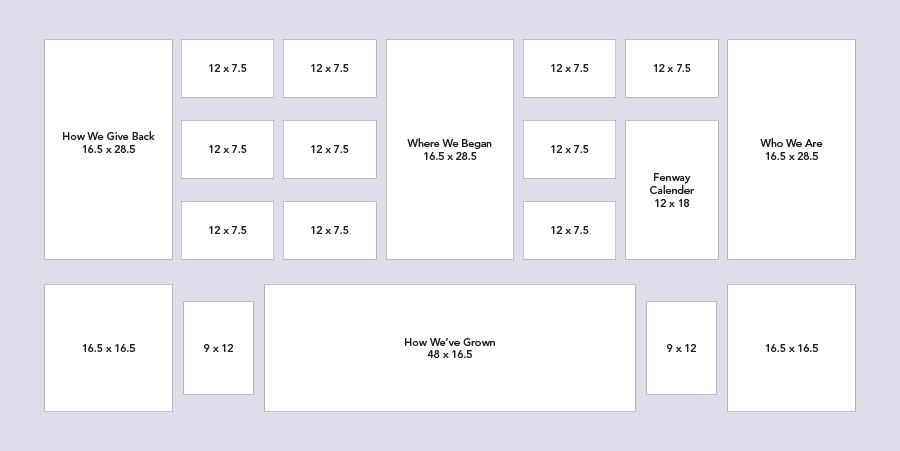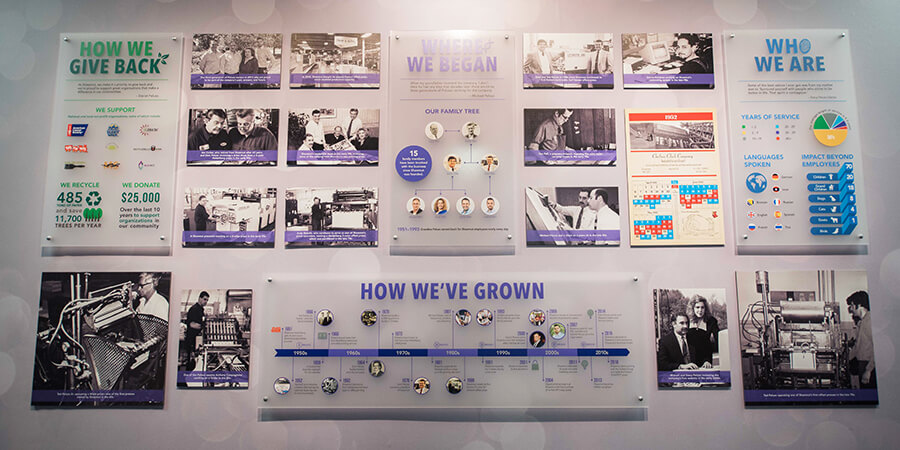Creating a wall display is a great way to illustrate your brand or create larger than life advertisements for your clients. Depending on your goals, you can design simple displays or complex works of art that are installed in just about any location—from your office lobby to sports arenas, train stations, airports, and more.
Every wall display project is unique and so is the installation. That’s why it is important to think about installation from the outset of your project as it can have a big impact on your design, schedule, and budget. The last thing you want is to spend your time coming up with a great concept and artwork only to find out that your wall display can’t be installed as planned.
10 tips for installing the perfect wall display:
- Communicate project goals to your print partner as early as possible.
This is point number one because it is the most important. While it may seem premature to start talking about installation before you start designing, these early discussions can help avoid challenges down the road. And while your vendor should have a list of specific installation questions, it’s also important to give them the bigger picture.So start at the beginning and include your print partner in high-level discussions about your project. Talk about your goals, challenges, the audience, similar work you’ve done, or other pieces that may be part of a larger campaign. You’ll also want to make sure that you keep the lines of communication open and involve your print partner in discussions as plans or designs change. By having access to all of the information at the beginning—and an ongoing dialogue as things progress—your supplier can minimize variables that can affect your install.
- Get photos and measurements of your space.
In order to get a quote for the production and installation of your wall display (which is often where companies start), you’ll need to detail the space. Whenever possible we recommend bringing your print partner onsite so they can assist you in taking the appropriate measurements and discuss any special considerations. However, when an onsite visit is not possible here are some tips to ensure you’re gathering all of the details they’ll need.
- Take several photos of your space (in good lighting) covering all angles. Take close-ups of any obstructions like outlets, door frames, windows, molding, etc.
- Measure the total space of the wall from end to end and floor to ceiling, as well as the measurements for any objects that you’ll need to work around. If your intention is to only use a portion of the wall for graphics, measure that space in addition to the whole wall.
- If possible, put your photos and measurements together in one document and add any necessary notes, labels, or comments.
- Accuracy and detail are key, so if you are detailing the space internally make sure your staff is comfortable and has the resources they need to be effective (tape measures, ladders, etc.). You don’t want to get to install day and find out that a measurement was off or that something wasn’t accounted for.

This is a good time to also schedule a conference call or meeting with your supplier to go over these details—and more importantly the project as a whole. As we talked about in the first tip, your supplier should want to know more than just the measurements and specs. They should want to fully understand your goals so they can provide recommendations and advice throughout your project.
- Prep your walls or surface area.
During the planning stages, it’s a good idea to take a hard look at the space and make note of any improvements needed. For example, are there any cracks or holes in the wall that need to be repaired? You’ll need this work to be completed well before your install date which can affect your budget and timeline. In some cases, paint or plaster (depending on the type) must dry for several weeks before other materials can be successfully installed. So take inventory of your space early on and make a plan for any repairs that are needed.
- Create an install map or template.
You don’t have to wait until your wall display artwork is approved to have a detailed install plan. Based on the measurements gathered and initial concepts, create an install map or template with “For Position Only” (FPO) markers for each element, along with their dimensions. If possible, this diagram should be to scale. This gives your installers a literal map of where to place each item and avoids any confusion.
- Plan for your wall display install.
Most wall display projects and experienced installers will have a good deal of equipment to help them get the job done properly. Make sure you thoroughly plan your install or have your print partner help you setup everything installers will need. Here’s a quick list of items you’ll want to consider:
- Parking: Installers will have large trucks or vans. Make sure they have space to park or access to loading docks.
- Security: Will they need special visitor badges or security clearance? If so, who is responsible for setting that up? Get the names of the specific installers ahead of time to make sure there aren’t any issues once they get onsite.
- Equipment: Will they have access to commercial elevators to move equipment and supplies as needed?
- Make sure the schedule works for everyone involved.
Check with the appropriate departments at your company or install location to ensure that the schedule is free and clear for your install. It’s also a good idea to ask if the install can take place during off-hours or weekends to avoid any interruptions. Keep in mind that this may result in additional security or staffing requirements. If your internal team needs to sign off on the install, make sure it’s taking place on a day/time that everyone is able to participate.Once the install is scheduled, make sure it’s on all participant’s calendars. And if the weather is a factor, make sure you stay on top of the forecast and communicate any changes to the team.
- Use PDAA installers.
You wouldn’t hire a plumber who isn’t certified to work on your house, so when it comes to installing wall graphics insist on PDAA certified installers. The Professional Decal Application Alliance or PDAA provides graphics producers with direct access to qualified, certified installers nationwide. Certified installers have gone through extensive training on all types of materials, applications, and techniques. PDAA offers two types of certifications including:
- MASTER installers who have passed PDAA's Master Proficiency Certification Tests, demonstrating proficiency in all types of vinyl installations including complex curves and vehicle wraps, and
- BASIC installers who have passed PDAA's Basic Proficiency Certification Tests, demonstrating proficiency in all types of flat and simple curve installations including signage, wall murals, and trailers with rivets.
Your print partner should help you to find the installer that’s right for your project but it’s a good idea to make sure they carry the appropriate certifications.
- Prep for your install day.
To ensure your installation runs smoothly, make sure the area is clean and tidy prior to the installers' arrival. Remove any obstacles or office clutter and if needed rope off the area to keep foot traffic to a minimum. This will allow the installers to work as efficiently as possible and minimize disruptions.
- Oversee your install.
Make sure someone from your staff is available to oversee the install, preferably someone that has been involved throughout the lifecycle of the project. They should be onsite for the duration of the install if possible and available to answer any questions the installers might have. In the event that someone cannot be onsite, make sure the installers have contact information for the primary contact person and a backup in case of any emergencies.
- Take photos of the finished project.
Last but certainly not least, take photos of your finished wall display! Show off your work by adding it to your team’s portfolio and share the results with your print partner. If they weren’t onsite for the install they’ll want to know how everything went and ensure all the wall display exceeds your expectations.
As you can see, there’s a lot that goes into installing the perfect wall display. From the size and scope of your display to the materials you choose, it is important to plan your install along with the creative.
The good news is that you don’t have to navigate the installation process on your own. If you’re working with an experienced print partner, they should be asking you the right questions to ensure that your wall display install goes off without a hitch! After all, the install can make or break your final piece so don’t leave it to chance.








